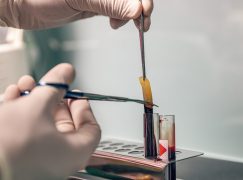

Meaning and receiving Ketamine
Ketamine was first used as an anesthetic for livestock in Belgium during the 1960s. In 1970, the FDA authorized it as a human anesthetic. During the War In Vietnam, it was utilized to treat wounded troops on the battleground. Because ketamine does not slow respiration or cardiac output like other sedation, patients are not required to remain on a respirator to obtain it.
It could be given to a restless patient who has been saved from an attempted suicide, for instance. Doctors began to notice the drug’s significant benefits against sadness and suicidal ideation, according to Ken Stewart, Ph.D.
Ketamine produces a “dissociative experience,” which most people would refer to as a “trip.” As a result, it became known as Vitamin K, Super K, Special K, and K, among many other names. It’s injected, mixed into beverages, snorted, and added to joints and cigarettes by partygoers.
Ketamine can cause sensations of exhilaration or buzz, as well as visual and sensory aberrations, a distorted sense of one’s body, transitory strange ideas and sensations, and a skewed perspective about one’s body.
The journey takes roughly two hours. Casual usage, however, carries dangers. Unconsciousness elevated blood pressure and severely slowed respiration is by far the most critical. Long-term side effects of the medicine include ulceration and pelvic pain, kidney difficulties, abdominal pain, anxiety, and memory loss. Ketamine can be dangerous in the hands of persons who drink excessively or if they consume it while inebriated.
However, the drug’s possibility as a depression cure and antidote to suicide thoughts has piqued researchers’ interest. They’ve examined and given it to people with therapy, depression, and other illnesses in medical practice. The usage of Ketamine for recreational purposes is not a cure for depression. Physicians have established a strategy for proper medical usage that may aid those who aren’t responding to traditional treatments.
How to receive the ketamine dose?
Ketamine is available in a variety of forms. Esketamine, a corticosteroid, is the only drug the FDA has licensed as a depression treatment. It’s for individuals who haven’t found antidepressant drugs to be effective, have a significant depressive illness, or are suicidal psych.
They continue to take their antidepressant while receiving esketamine in a physician’s office or facility, where a healthcare professional monitors them for two hours following the dose.
Patients with treatment-resistant depression often receive the inhaler multiple times per week one to four weeks, single day in seven days for five to nine weeks, and once per week or two thereafter.
The spray comes with such a “black box” caution regarding the possibility of sedative, as well as problems with concentration, reasoning, and cognition, and also the possibility of drug exploitation, as well as aggressive thoughts and feelings.
IV infusion, an injection in the forearm, or lozenges are other types of ketamine not authorized by the FDA for psychiatric health disorders. The majority of the study focuses on ketamine administered by IV. It could only be obtained by an Intravenous or an injection in a physician’s office. Some physicians will recommend lozenges for by-yourself usage, which are frequently used to combat depression in between injections.
Skye Marshall
Ivy Skye Marshall: Ivy, a social justice reporter, covers human rights issues, social movements, and stories of community resilience.








